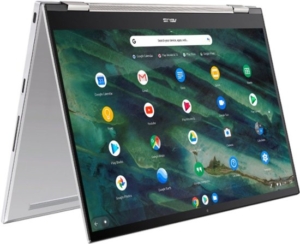The Game-Changing Device for Students with LD
The Game-Changing Device for Students with Learning Differences
 Virtual learning was not been easy for Chelsea School’s students, but the experience helped teachers and staff to better understand what type of electronic device could best to meet the needs of students with learning disabilities.
Virtual learning was not been easy for Chelsea School’s students, but the experience helped teachers and staff to better understand what type of electronic device could best to meet the needs of students with learning disabilities.
In the fall of 2019, the school began upgrading its first generation 4GB Chromebooks for a new model with a larger screen and keyboard, stronger memory and processing, and a flippable touchscreen. For many reasons, this device has proved to be game-changer for students with learning differences.
In consultation with Chelsea School’s occupational therapists, it was decided that the first generation model Chromebooks that we were using were not appropriate for most of our students. The screens were too small, making small print very difficult to navigate, and the keyboards were cramped, making it very hard for students to type. Also, the computer did not have the memory capacity to run multiple platforms at once, such as Google Classroom, Gmail, Google Meet, and any of our instructional platforms.
Our students have come to rely on features that allow them to access texts and curricular content much easier than they could before. Google Read and Write, a program that provides text-to-speech and speech-to-text functions, is incredibly useful to students who struggle with reading and writing. Having instant audio output for all text gives students a level of confidence that is truly remarkable.


